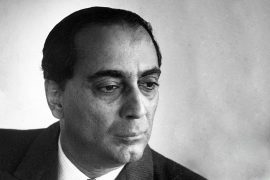Mamallapuram, or Mahabalipuram, is full of striking rock-carved temples, caves, and intricate sculptures representing the grandeur of the Pallava kingdom. Mamallapuram attests to the dedication of the Pallava dynasty to art and culture, especially that of King Mahendravarman I.
Mahendravarman, son of King Simhavishnu, reigned from 600 AD to 630 AD. The Pallava king had assumed many birudas or titles like Mattavilasa, Vichitrachitha, Gunabhara, etc., which express his generous character and patronage of art, literature, and architecture. Many birudas are inscribed on his architectural projects and can be found today on the Mamallapuram template. An intellectually curious ruler with a great interest in the arts, he was considered a genius in war and peace.
In the early years of his reign, Mahendravarman and his father, Simhavishnu, suppressed the Kalabhras and expanded the borders of the Pallava kingdom beyond the river Kaveri. Mahendra’s growing power and influence were becoming a threat to Pullakesin II of Chalukya. Pullakesin II had recently defeated Harshavardhan of the Vardhana dynasty, whom he sought to invade the Deccan, and moved south to face the Pallava king. While Mahendravarman was able to protect his capital, he lost the northern provinces to the Chalukyas.
Mahendravarman’s superiority is further noted in his carefully written satire on religion, Mattavilasa Prahasana. During the time of Mahendravarman I, religious dynamics in the kingdom were changing. Born into Jainism, Mahendravarman converted to Shaivism under the influence of the Shaiva saint Appar, also known as Thirunavakkarasar. As Jainism and Buddhism expanded rapidly, Shiva and Vishnu saints grew outwardly hateful towards them. Mattavalisa displayed this friction between Shaivites and the Buddhists.
The story, set in Kanchivaram, the Pallava capital of the time, revolves around Satyasoma, Devasoma, Naagasena, and a madman. As the story goes, Satyasoma is a Shaivite from the Kaapalika sect. His wife is Devsoma. One day, Satyasoma, in an intoxicated state, loses his skull bowl. Since the bowl has roasted meat, he assumes that a dog or a Buddhist monk has taken it. At the time, Naagasena, a Buddhist monk, enters the stage. Satyasoma blames him for stealing the bowl, which causes a dispute. As the fight continues, Naagasena prepares to surrender his bowl. Eventually, a madman appears with a skull-bowl, which he took from a street dog, and gives it to Satyasoma.
The play presents a clear commentary on the dynamics of religion. The dialogues attributed to Satyasoma—who indulges in alcohol, eats meat, disregards Buddhism, and expresses the sexual desires of Devsoma—present a stereotypical view of Shaivism at the time. Through the monk Naagasen—who receives food and wonders why the Buddha prohibited alcohol and sexual pleasures— Mahendravarman comments on the degeneration of Buddhism; it’s a satire on Buddhist monks who sought worldly pleasures.
Mahendravarman’s devotion to Shaivism can be seen through the architectural structures he sponsored. He installed the trinity— Brahma, Vishnu, and Shiva—in the first rock-cut temple built in Mandangapattu. Mahendravarman was a pioneer of rock-cut architecture in India. The temple in Mandangapattu used no bricks, wood, or metals. The temple is inscribed with his biruda, Vicitracitta, meaning the curious-minded, along with a short note.
This is the temple caused to be built by king Vicitracitta (the curious-minded) for the Trimurti, i.e., Brahm, Isvara (Siva), and Visnu—a structure designed without [the use of] bricks, timber, metals, and mortar.
He also built cave temples for Vishnu at Mahendravaadi and Maamandur.
The socio-cultural aspects of his era are preserved in history through his single-act drama, Mattavilasa prahansanam, and through his contribution to architecture. Inscriptions of birudas present the reader with his personality and ambitious promotion of artistry. His patronage of arts and culture is today recognised as home to several UNESCO World Heritage sites.
-30-
Copyright©Madras Courier, All Rights Reserved. You may share using our article tools. Please don't cut articles from madrascourier.com and redistribute by email, post to the web, mobile phone or social media.Please send in your feed back and comments to [email protected]











